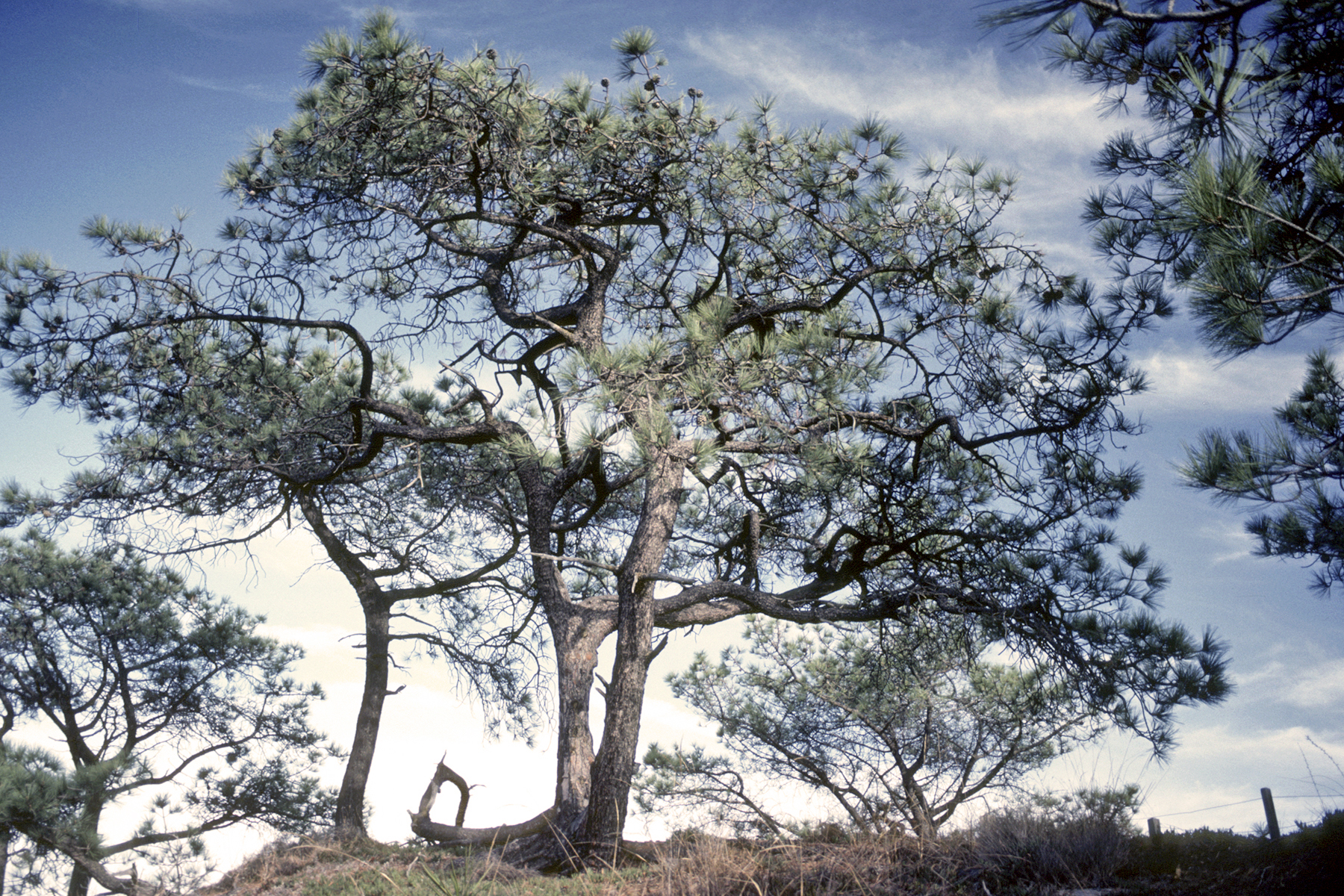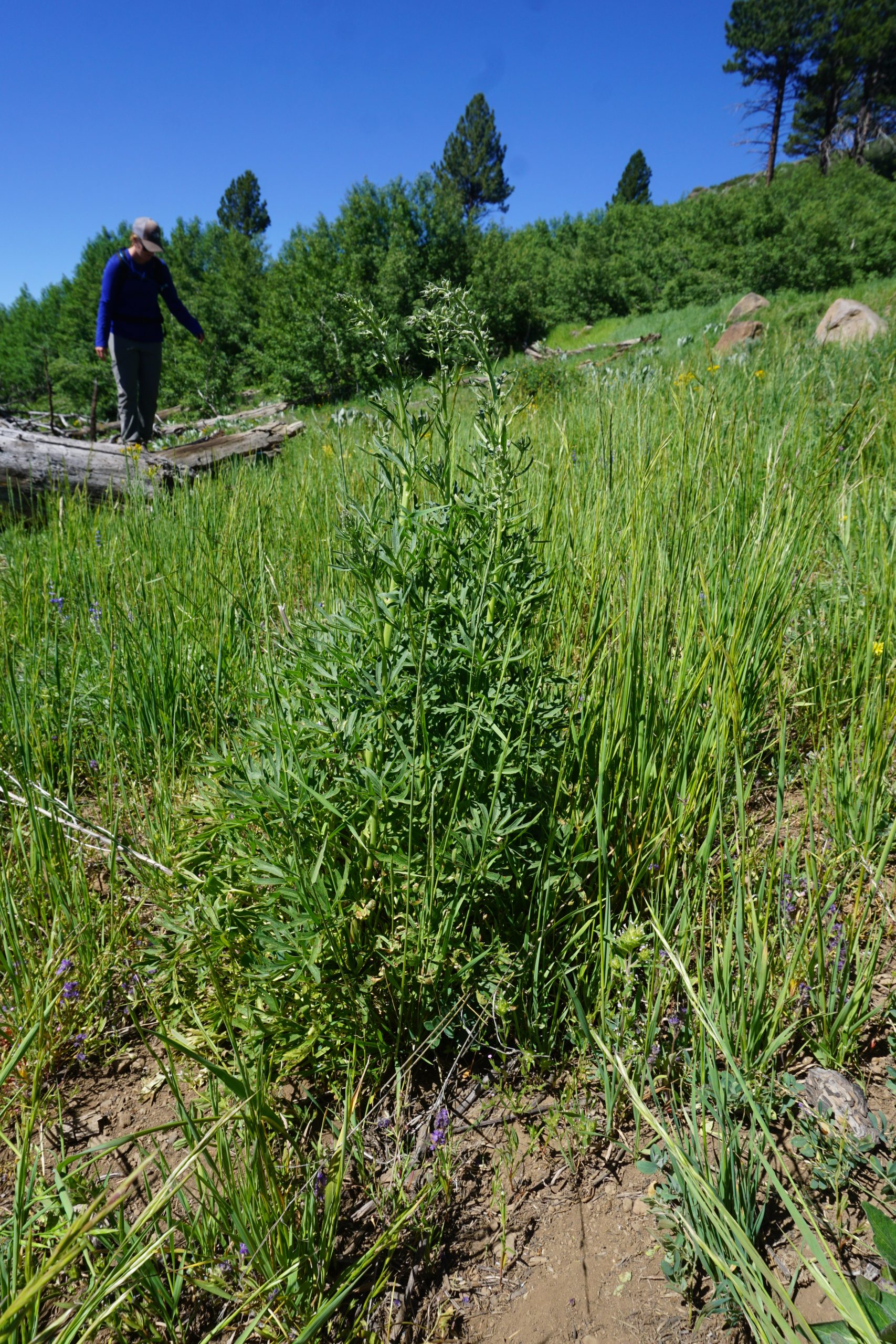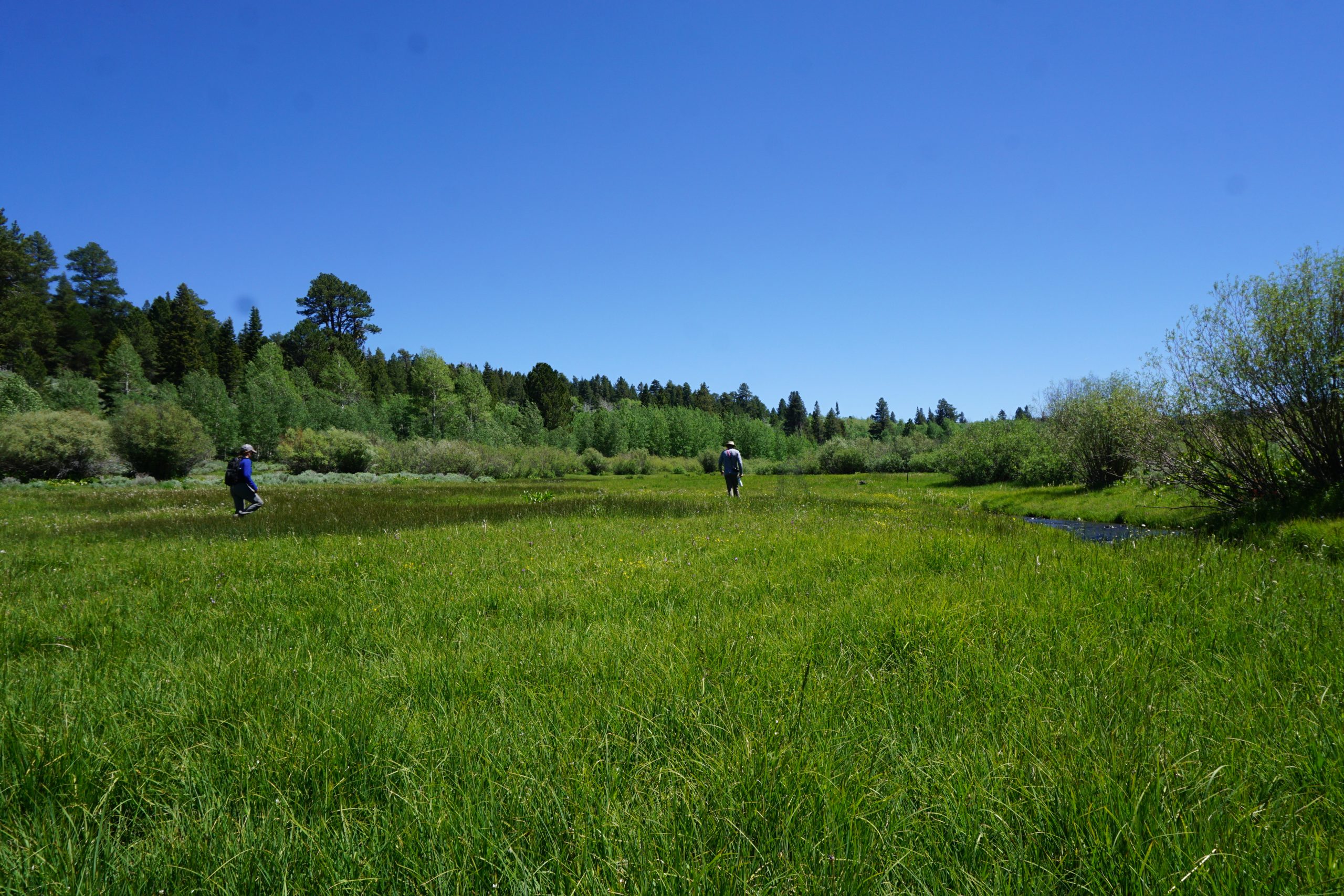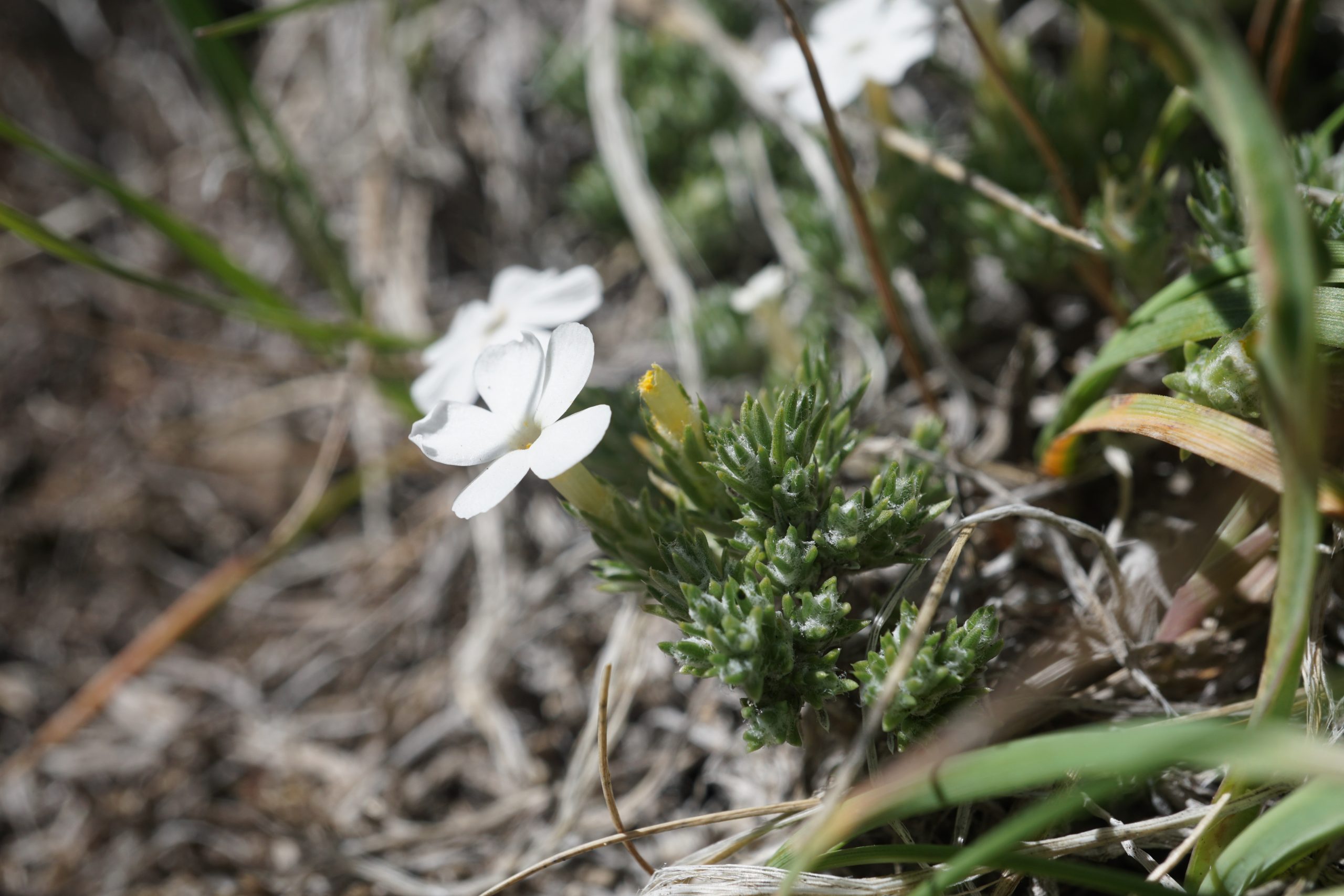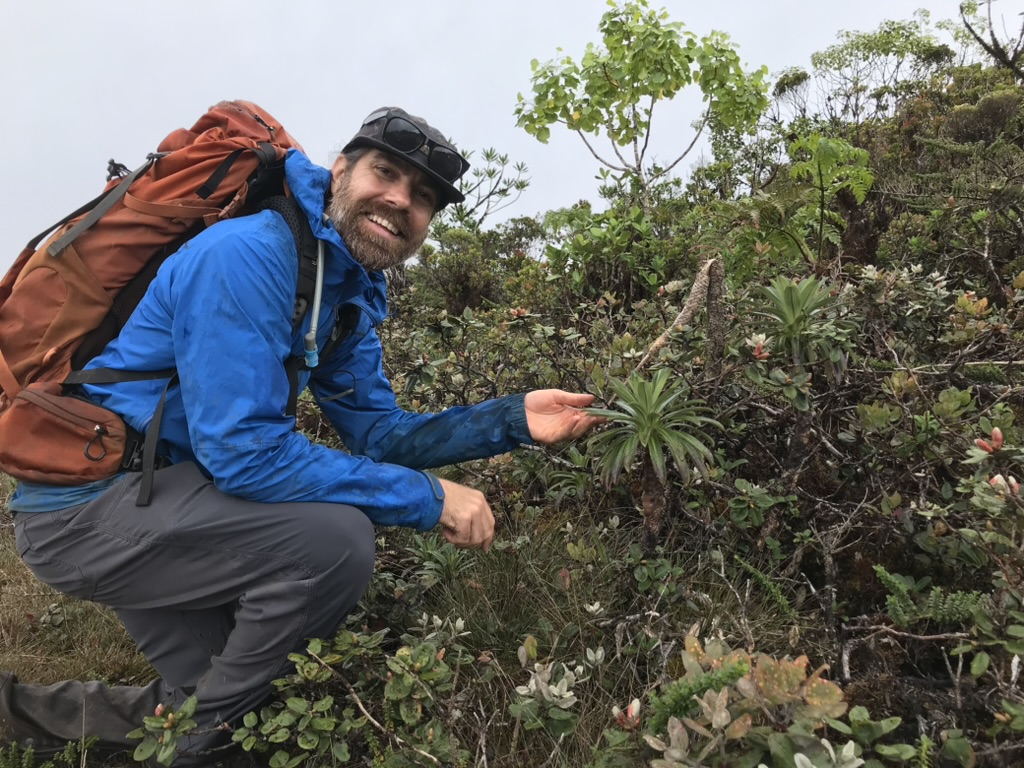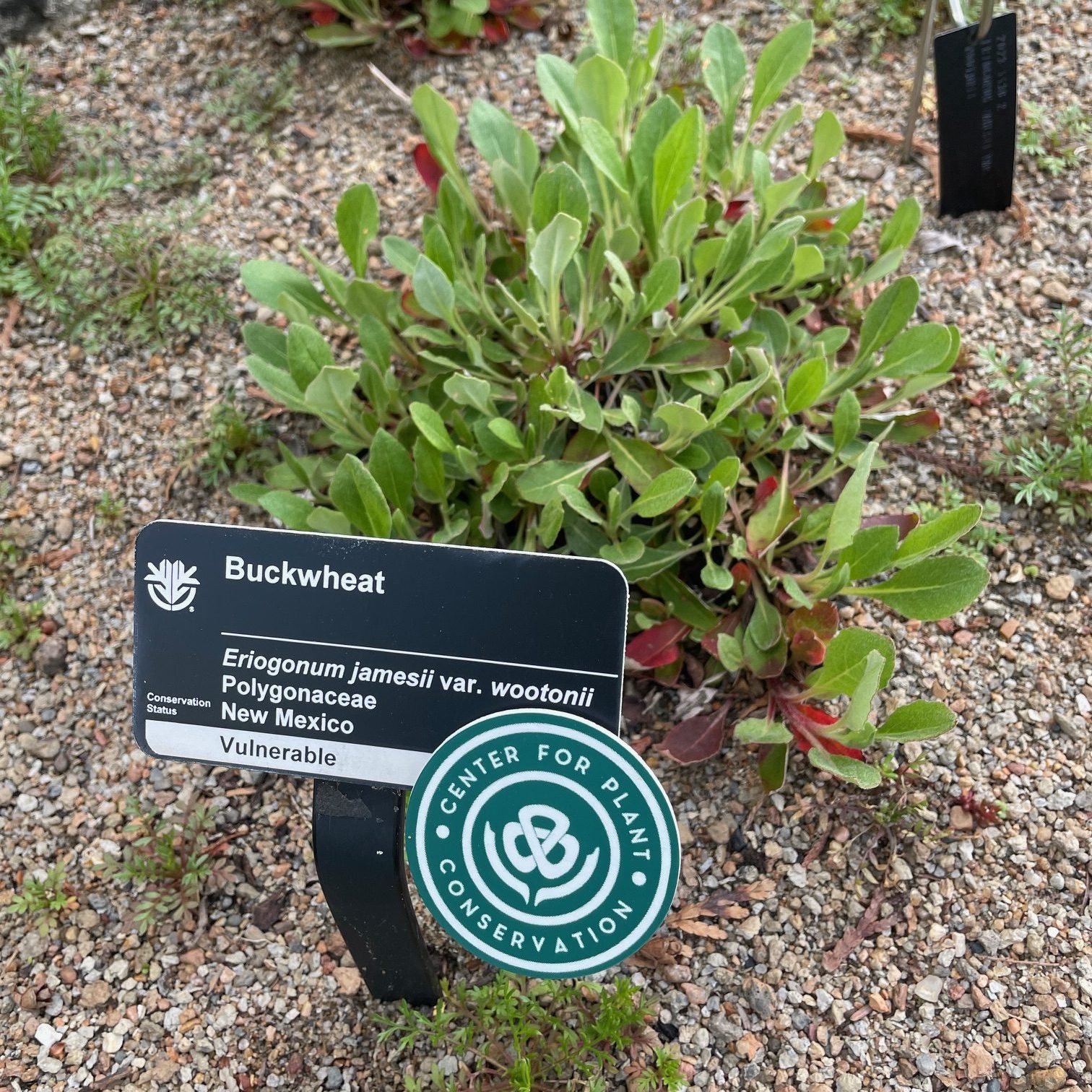Save Plants
Center for Plant Conservation
Preventing the extinction of imperiled plant species is not for the faint of heart, nor is it something an individual can do alone. The threats are numerous, serious, and even pervasive: fire, changing climates, urbanization, excessive grazing, droughts and other changes in hydrology, collectors and poachers, and more. Every rare plant species has its own set of threats and challenges, and conservationists need to know what they are as well as the status of the various wild populations—if there are more than one—to be able to plan and carry out conservation measures. Saving plants by building a safety net—a collection of seeds and plant materials to repopulate when conditions improve—and establishing ex-situ populations in botanical gardens are the equivalent of an insurance policy against the threat of extinction. This essential work requires a village–an extended team, partnerships, energy, and resources.
In this issue, we’ll learn about the collaborative efforts of several CPC Institutional Conservation Partners with the US Forest Service (USFS) to prevent the extinction of several severely imperiled plant species. In some cases, such as the work of the Southwest Office of the Institute for Applied Ecology, it is done by making conservation collections on USFS lands and propagating cuttings for future reintroductions in the wild. In other cases, such as the efforts of the American Public Gardens Association and the USDA Forest Service’s Forest Health Protection partnership, it means building up ex-situ, genetically diverse collections in botanical gardens and other public areas. These collaborations have been very successful in the past, as in the partnerships built around the many species of imperiled oaks. As highlighted by the recent work of California Plant Rescue partners, it can also take the form of establishing formal agreements to make seed and herbarium voucher collections to support the conservation and management of rare species on select USFS lands. These are some of the many examples that show that the “village” approach does work to advance the conservation of rare and endangered plants.
We are thankful for our many partners and collaborators who, together, save more plants than would ever be possible alone.
Conserving the Arizona Willow
In the summer of 2022, while wildfires raged across much of New Mexico, the Southwest Office of the Institute for Applied Ecology (IAE) planned to collect material from the imperiled Arizona Willow (Salix arizonica). IAE’s mission is to conserve native species and habitats through restoration, research, and education. The Southwest branch has been engaged in conservation of rare plant species in New Mexico and Arizona since 2016, including developing conservation strategies and collecting seed from native rare plants. Salix arizonica is a globally imperiled plant occurring in Arizona, Colorado, Utah, and New Mexico, with most populations existing on US Forest Service (USFS) land. In New Mexico, this species is classified as critically imperiled (S1), and USFS considers Salix arizonica a Sensitive Species in all USFS Regions it occurs in. Last year, IAE received funding through the Center for Plant Conservation – US Forest Service Region 3 rare plant seed banking agreement and set out to make conservation collections of Salix arizonica in New Mexico.
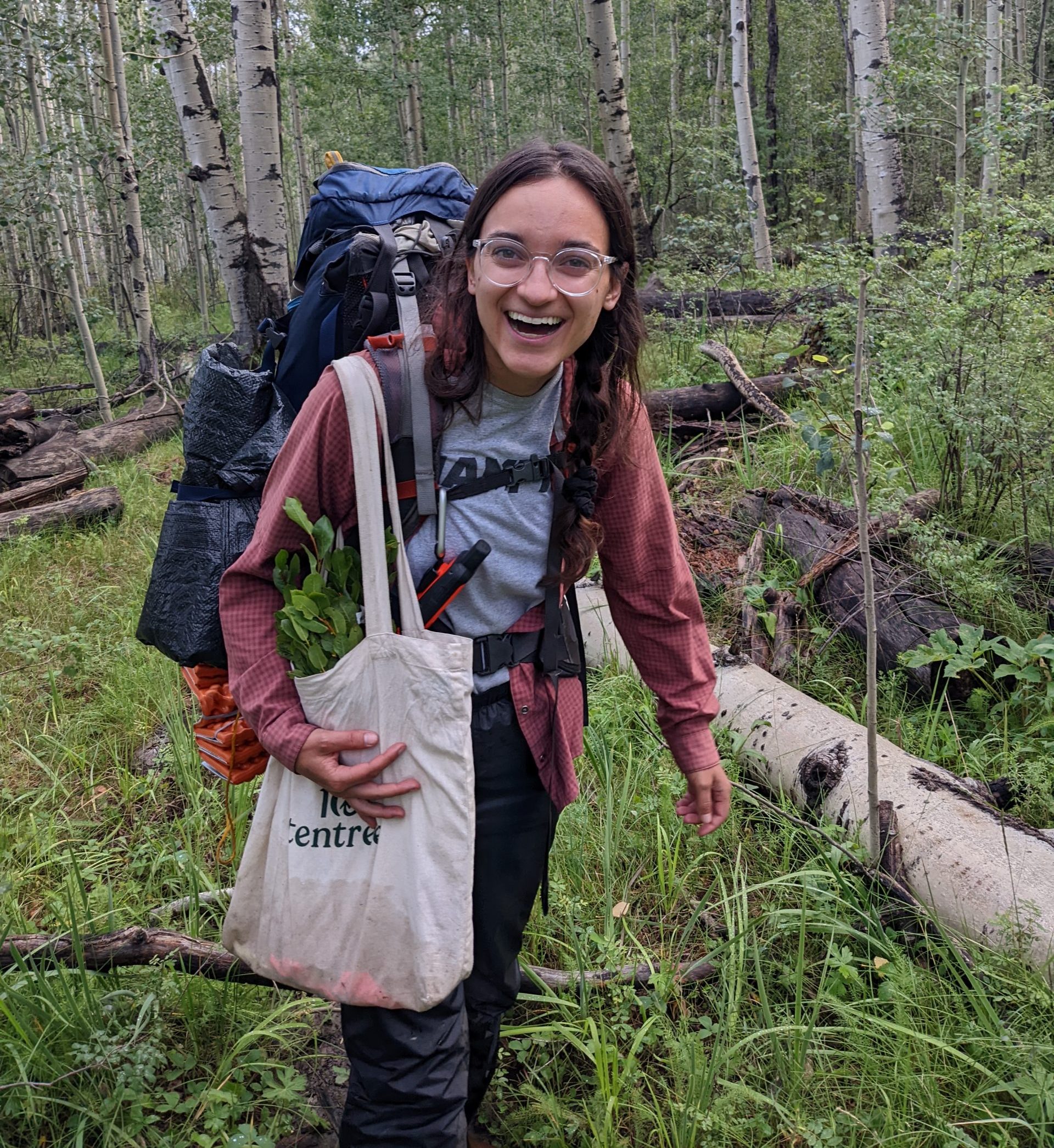
The team from IAE began their collections journey in July, postponed a month by the fires sweeping through the state. Most of the high elevation wetland habitat occupied by Salix arizonica exists in remote wilderness areas, where motorized equipment is not allowed. For this reason, a two-person team from IAE backpacked their way through US Forest Service land in northern New Mexico carrying limited supplies and hiking up to 14 miles a day.
While fire closures blocked access to parts of the willow’s habitat, preventing them from making collections at all of their intended sites, the IAE team was able to collect cuttings from three metapopulations of Salix arizonica occurring in both the Carson and Santa Fe National Forests. Nearly 250 cuttings from 123 maternal plants were collected and are currently being maintained on a propagation block at the Pueblo of Santa Ana Nursery, a frequent partner of IAE’s Southwest Office where IAE’s native seeds are frequently propagated for restoration. The conservation cuttings, which were placed in soil shortly after returning from the field, consistently grew roots within a few weeks and are continuing to do well.
While they were in the field journeying through Salix arizonica habitat in New Mexico for this collection expedition, IAE simultaneously surveyed the species’ populations. Many of the willow’s existing known sites were historical and needed updated threat assessments so land managers and conservationists can adjust management practices for the species’ current state.
One site which had not been surveyed since 2001, when it had been a healthy population, was unfortunately found extirpated; the hope is to prevent future losses. IAE received crucial information on historical populations and population access from USFS, the New Mexico Energy Minerals and Natural Resources Department, and the US Geological Survey. The Arboretum at Flagstaff provided protocols for field collection of cuttings. This emphasizes the importance of partnership in conservation. The CPC – USFS agreement which funded this conservation collection supports rare plants located on USFS Region 3 land, funding conservation collections to be stored in CPC member institutions.
While conducting surveys, IAE found Salix arizonica to be heavily impacted by grazing and browsing by cattle and elk, as well as hydrologic changes. IAE plans to survey the populations they were unable to access due to last summer’s fires in the coming field seasons. Next steps in the conservation strategy for this species should include addressing the amount of grazing on vulnerable populations and potentially hydrologic restorations in degraded sites. In the far future, IAE’s Southwest Office would ideally be able to plant grown out seedlings or cuttings to help boost wild populations.
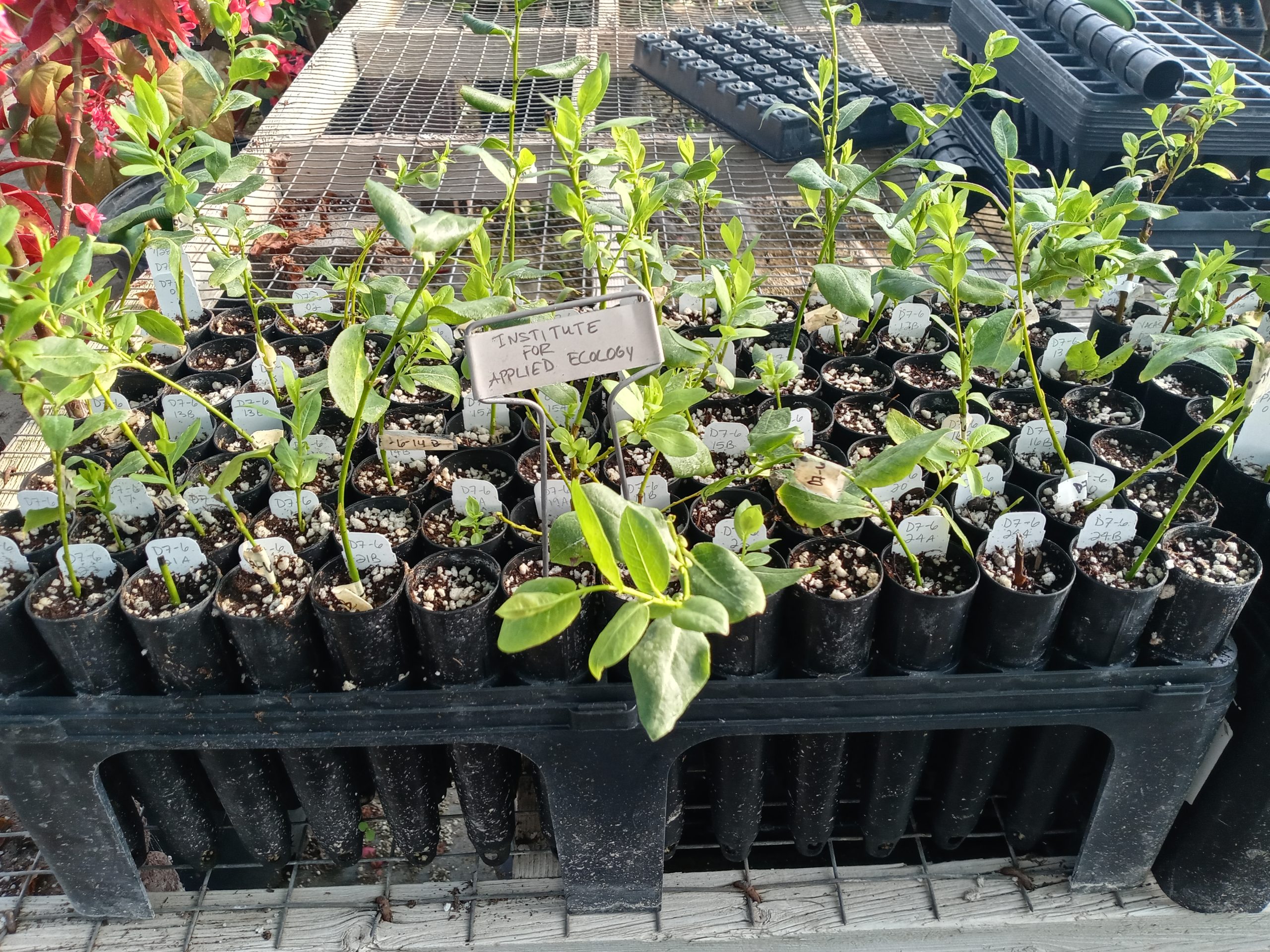
-

Closeup of a rare reproductive individual of Salix arizonica found during IAE's 2022 surveys. This plant was located along a stream in the Carson National Forest. Photo by Tyler Turk. -

A population of low-growing Salix arizonica in a typical wet meadow habitat in New Mexico. Photo credit: Tyler Turk. -
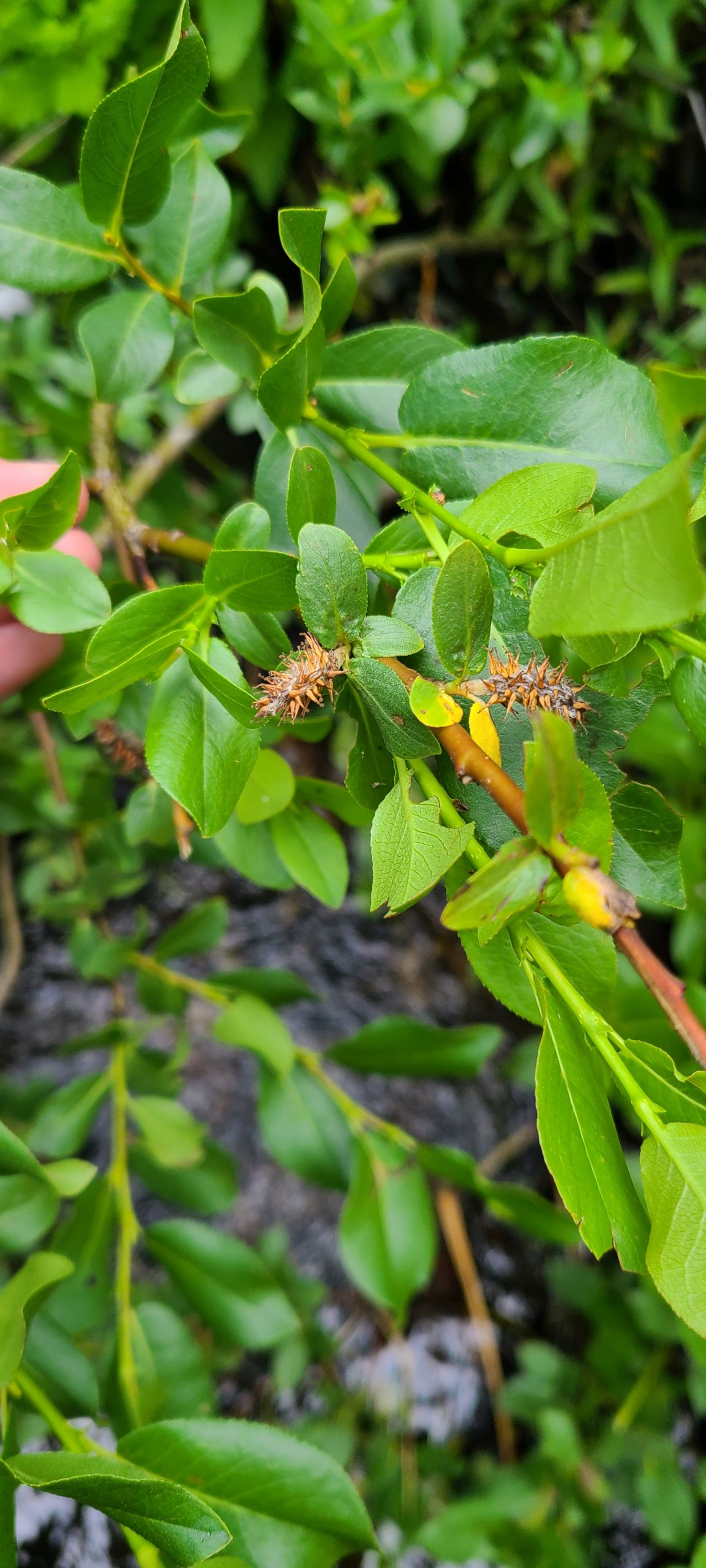
Pistillate catkins of Salix arizonica from a population in New Mexico. Photo credit: Tyler Turk, Institute for Applied Ecology.
Partnering to Advance Tree Gene Conservation
American Public Gardens Association (APGA) and the USDA Forest Service’s Forest Health Protection launched the Tree Gene Conservation Partnership in 2015. The Partnership targets North American tree species for conserving through genetically diverse ex situ collections at public gardens. Efforts focus on at-risk taxa which cannot be effectively conserved through traditional seedbanking methods. A core program of APGA, Plant Collections Network, and its Nationally Accredited Plant Collections™ holders have contributed subject matter expertise, experience in collecting expeditions, horticultural knowledge, and public outreach to a collective 120 million visitors annually.
The Tree Gene Conservation Partnership offers matching grants to support scouting and collecting trips, and distribution of propagules to collaborating public gardens. Collaborators scout wild populations and attempt to collect seed or propagation material from across the native range. Our guidelines recommend utilizing CPC’s Best Plant Conservation Practices with the goal of safeguarding germplasm in multiple living collections at public gardens. Project organizers consult experts about targeted species and engage local collaborators from state and local agencies to scout wild populations. Collectors are encouraged to incorporate two methods of gene capture to increase the likelihood of successful conservation efforts.
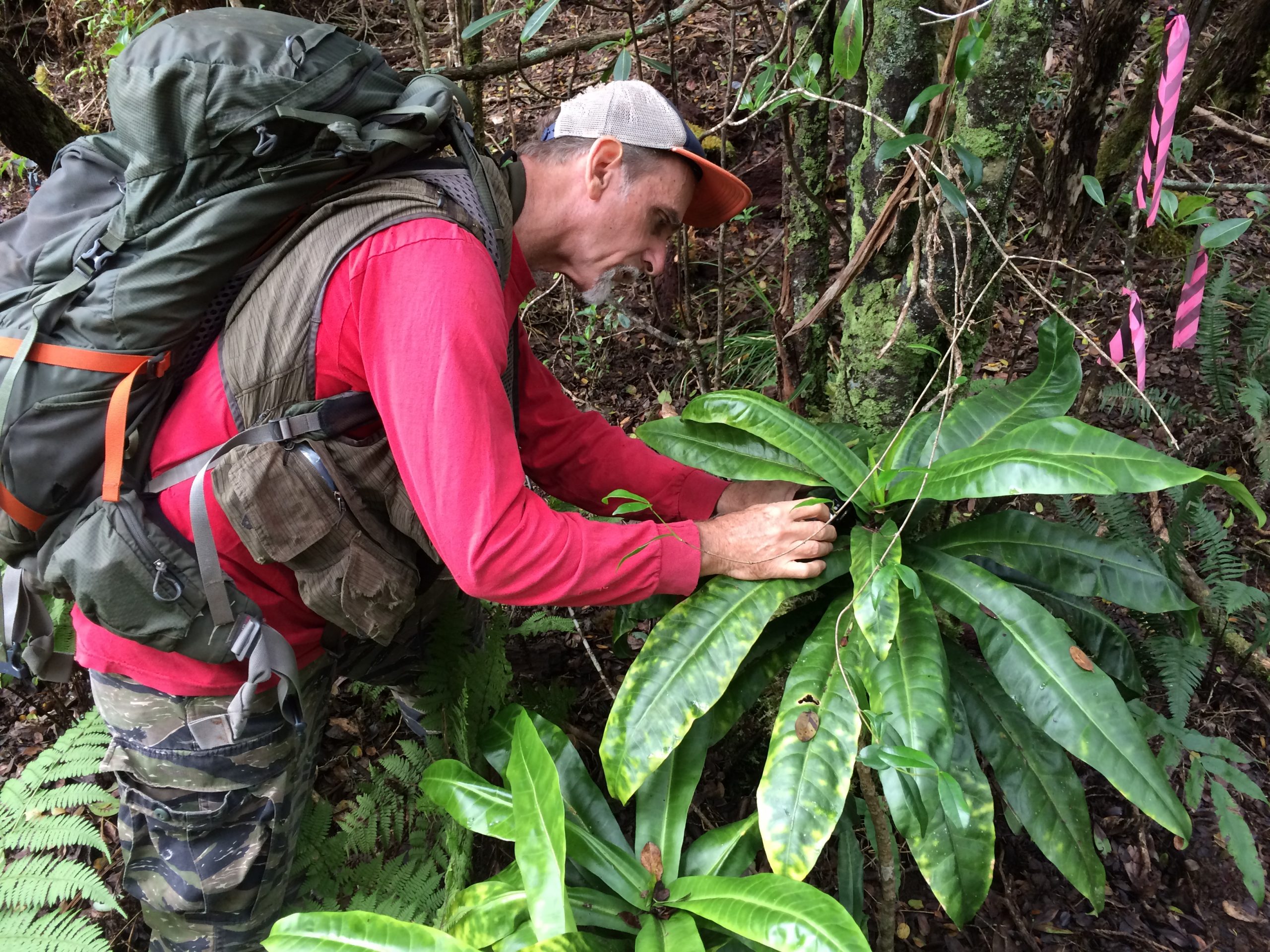
Four projects led by National Tropical Botanical Garden have focused on endangered and critically endangered Hawaiian endemics including Alectryon micrococcus var micrococcus, Melicope rostrata, Ochrosia kauaiensis, Alectryon macrococcus var macrococcus, and Pritchardia minor. Two additional projects are underway in 2023 targeting Melicope nealae and Melicope stoneii. Hawaiian project leaders have noted that this Partnership is filling a critical funding niche in supporting conservation activities in Hawaii.
On the mainland, projects have targeted Magnolia tripetala, Magnolia pyramidata growing in ravines of the coastal plain from South Carolina to Texas, and the northern edge of Magnolia virginiana var virginiana to capture genes for winter hardiness. Another project worked with local collaborators in Puerto Rico focusing on island endemics Magnolia portoricensis and Magnolia splendens.
Other projects have targeted Juglans californica and endemic Juglans major in the West, while Minnesota Landscape Arboretum has led a multi-year project focused on endangered Juglans cinerea in Minnesota, Wisconsin, and Iowa.
Many oak species throughout the United States have benefited from targeted collaborative projects supported in part by this Partnership including: Quercus acerifolia, Q ajoensis, Q arkansana, Q boyntonii, Q cedrosensis, Q dumosa, Q georgiana, Q havardii, Q macrocarpa, Q oglethorpensis, Q palmeri, Q sadleriana, Q toumeyi, and multiple oak species in the Trans-Pecos mountain range.
Other diverse projects have targeted Lyonothamnus floribundus subspecies floribundus, Zamia integrifolia native to Florida and Georgia, Pinus torreyana subspecies torreyana in San Diego County and Pinus torreyana subspecies insularis on Santa Rosa Island, and Aesculus parviflora which grows in the same habitat as Arkansas Oak. This year, the Partnership is helping support conservation projects for Cotinus obovatus, Quercus ajoensis and Q. toumeyi, and sampling from additional populations of Quercus boyntonii and Quercus palmeri.
This Partnership to date has awarded nearly $300,000 in grants to help support projects targeting thirty five species in twenty eight states & Puerto Rico. These scouting and collecting activities foster diverse collaborations and help bring together scientists, specialists, and conservation practitioners from Federal agencies, universities, non-governmental organizations, and public gardens. The Partnership serves mutual interests of APGA and the Forest Service to advance germplasm conservation through collaborative, shared stewardship in an effort to help slow the rate of unprecedented global biodiversity loss.
To raise awareness of these collaborative conservation activities, projects which have received funding through this Partnership are showcased on APGA’s website. Each profile is organized by its targeted species and includes a list of participants, safeguarding sites, and project reports. Activities of the Partnership are also highlighted through conference presentations and articles, and cross-promoted through partnering organizations.
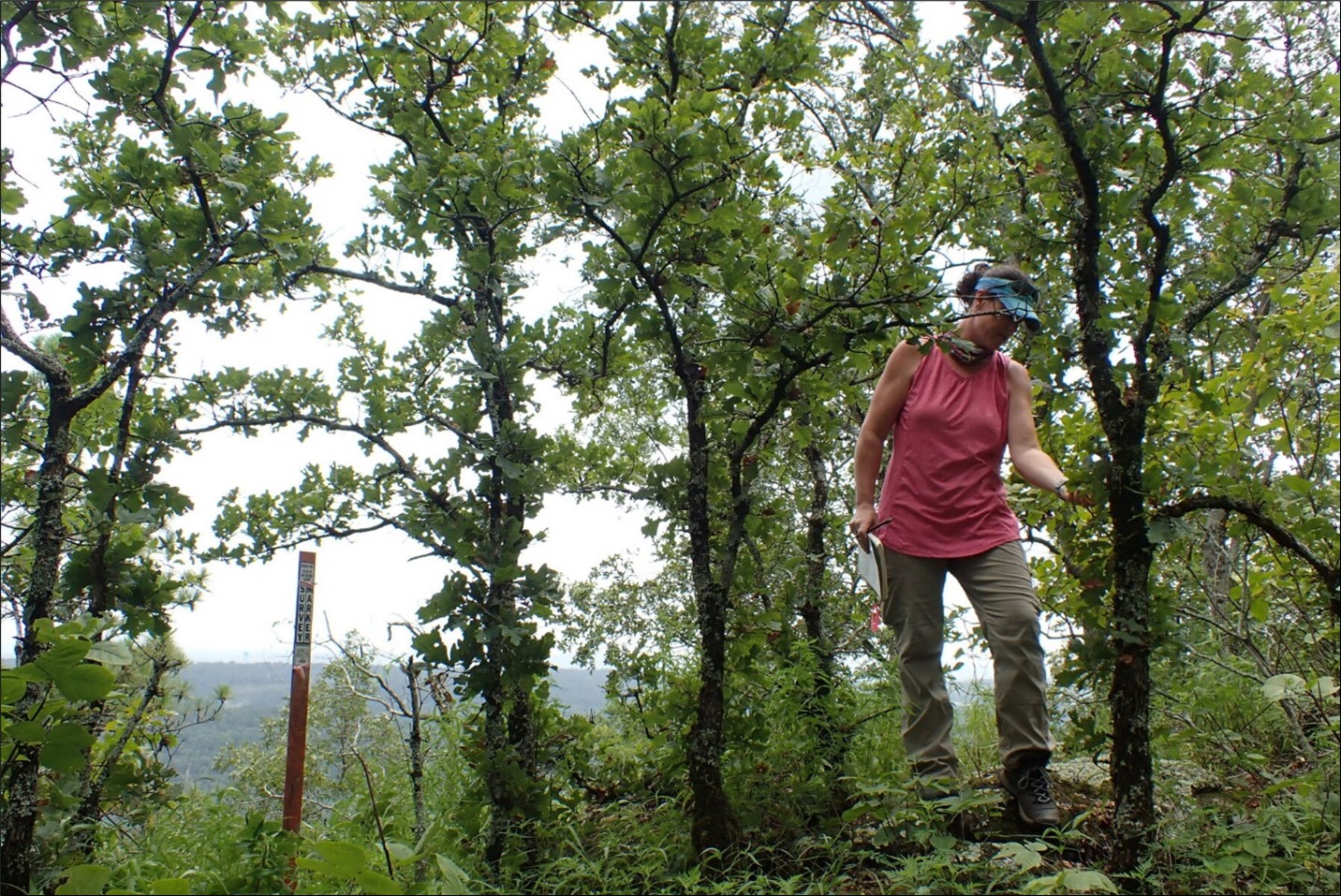
A collaborative workshop themed “Gene Conservation of Tree Species: Banking on the Future” was held in 2016 in Chicago. It brought together forestry specialists, researchers, and public gardens professionals to discuss common interests in North American tree conservation and to explore opportunities to coordinate activities. The workshop focused on genetic conservation, pest and pathogen resistance, risk assessments, in situ conservation efforts, coordinating ex situ conservation collections, and restoration of species and ecosystems.
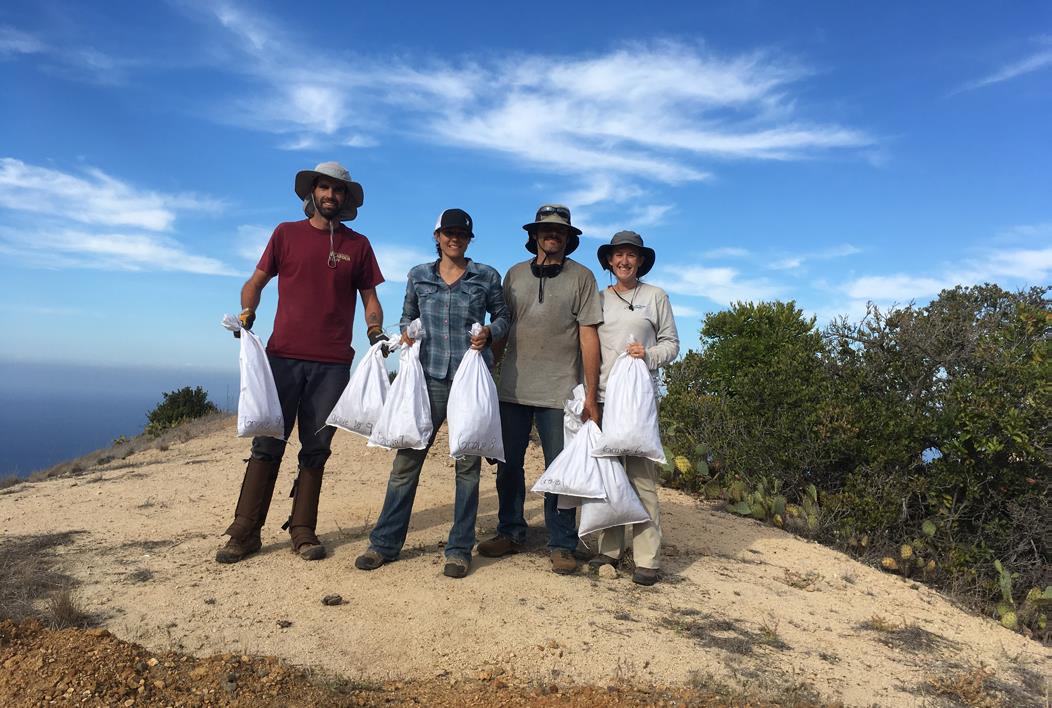
These activities have contributed to broader partnerships between the United States Forest Service, USDA Agricultural Research Service, and the North American Plant Conservation Initiative to safeguard trees. This initiative between American Public Gardens Association, Asociacion Mexicana de Jardines Botanicos, Botanic Gardens Conservation International, Center for Plant Conservation, and Plant Conservation Alliance non-Federal cooperators contributed collaborative conservation activities including the North American Botanic Gardens Strategy for Plant Conservation.
American Public Gardens Association and the United States Forest Service also hold a Memorandum of Understanding recently renewed in 2022 that is focused on areas of mutual interest including: collaborations in conserving at-risk species, restoration work, biological invasions detection training, environmental education, and a streamlined permit process for accessioning Forest Service lands.
Another formal agreement with the Forest Service supports APGA’s Plant Heroes environmental education program and distributes interpretive signage about high consequence pests and pathogens for public gardens to raise awareness. The Forest Service has also served as Presenting Partner of the APGA’s Annual Conference in recent years including the upcoming conference to be held June 5-8, 2023, in Fort Worth, Texas.
Expanding USFS Partnership with a New Tool
It was a beautiful evening in June last year, we were nestled amongst the ponderosa and Jeffrey pines of the Modoc National Forest when we got the news. A crowded field truck filled with staff from three California Plant Rescue (CaPR) member institutions rolled up and happily announced, “the LOA got signed!” The other dozen or so CaPR botanists in the campsite crowded around to hear more. The “LOA” referred to a Letter of Authorization for seed collecting from the U.S. Forest Service (USFS) – something that everyone in CaPR had been awaiting.
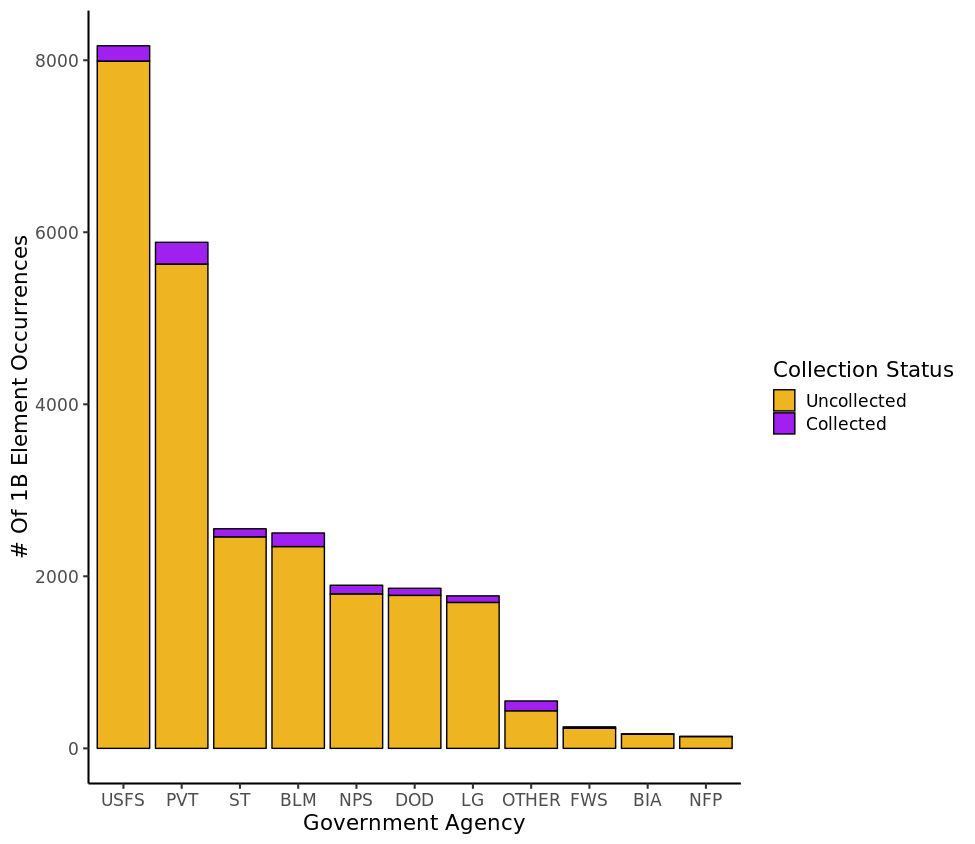
CaPR is a group of botanical institutions in California working to conserve the flora of the state in ex situ collections – largely in seed banks. To accomplish this goal, we need access to lands that the rare and threatened plants call home. As the USFS manages over 20 million acres in the state, it should be no surprise that many rare plants find homes under their purview. We are also more likely to know about the existence of rare plants on these federal lands, as the USFS have botanists on staff and federal projects require botanical assessments as part of NEPA requirements, meaning more is documented. An early analysis of the gaps in CaPR collections identified USFS as having occurrences of many of the taxa missing from collections. It was clear that strengthening our relationships with USFS would be necessary for CaPR to reach its goal to bank seeds from all of the rare and threatened species in the state.
To this end, the California Native Plant Society (CNPS) sought permission for CaPR from the Pacific Southwest Region of the Forest Service (Region 5) to make seed collections under a ‘blanket permit’ covering all National Forests and all taxa. This was a big ask. Permits require not only notification to forest botanists, but a biological evaluation on certain species which take a lot of field time and effort. Serving as a detailed, or temporary, regional botanist at the time, Blake Engelhardt realized that a permit wasn’t the right tool for what CaPR wanted to do. CNPS had received a special LOA for voucher collections on National Forests and that seemed to be a good tool for a similar purpose. So, Blake recommended to her supervisors, including Deputy Director of Ecosystem Management, Diana Craig, that a LOA be created for CaPR to make seed collections.
Diana presented the LOA idea to CaPR at our annual meeting in 2021. The agreement would be a formal letter covering Region 5 and allowing CaPR members to work through a special process of notification and reporting to make seed and voucher collections for five years. It acknowledges that collecting seed and the identifying vouchers from a population are conservation actions that shouldn’t be considered under the general plant collection permit process.
It took time to pull the letter and its stipulations together. Lusetta Sims stepped into the detail position of Regional Botanist, championing the cause, and USFS botanist Julie Kierstead worked with me and Aaron Sims of CNPS to pull together the details. It is no coincidence that many of the USFS personnel pushing this new tool for the partnership forward have worked closely with CaPR members in the past: with Blake having great experiences with California Botanic Garden on the Inyo National Forest and Lusetta with CNPS staff and volunteers on the Trinity-Shasta forests.
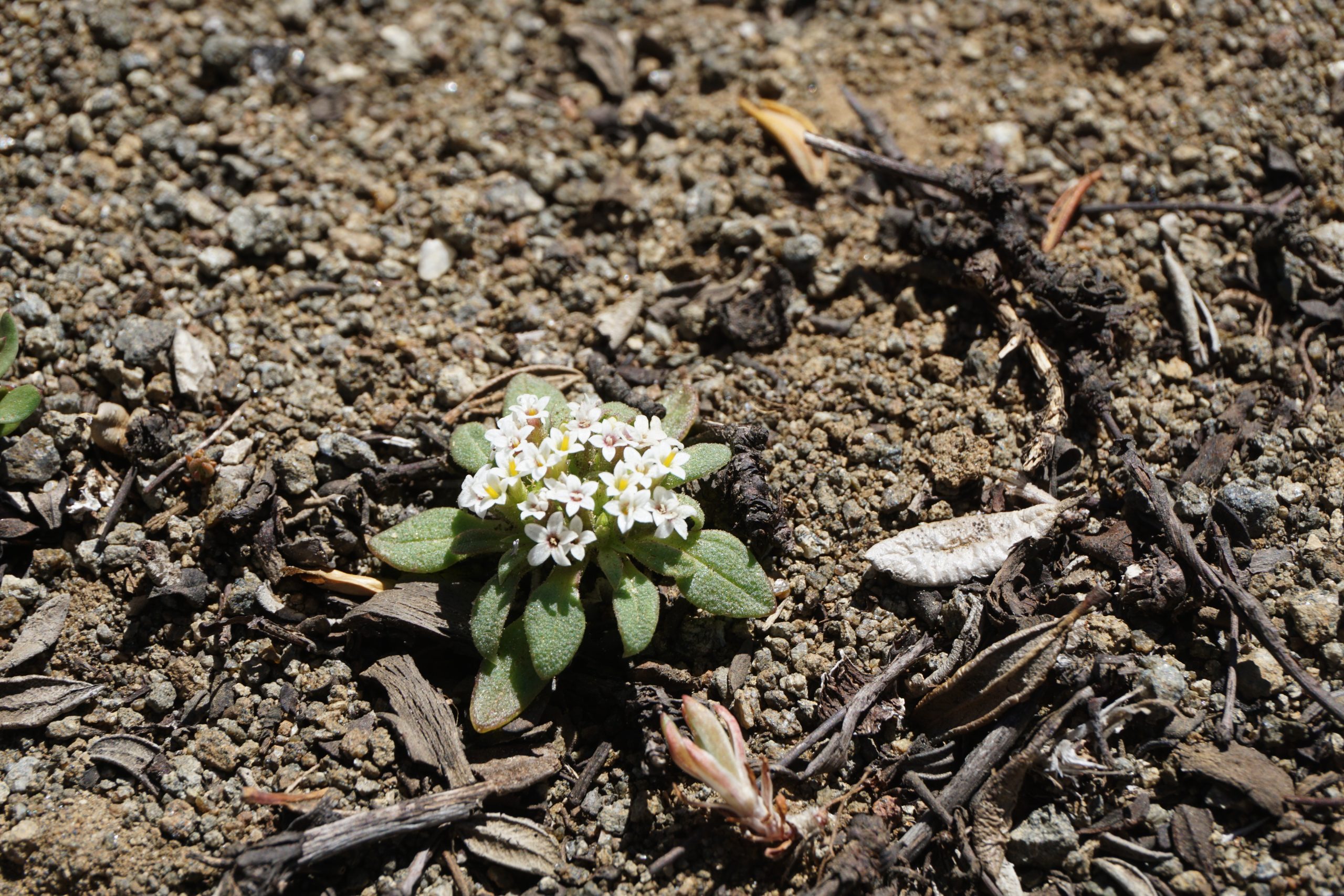
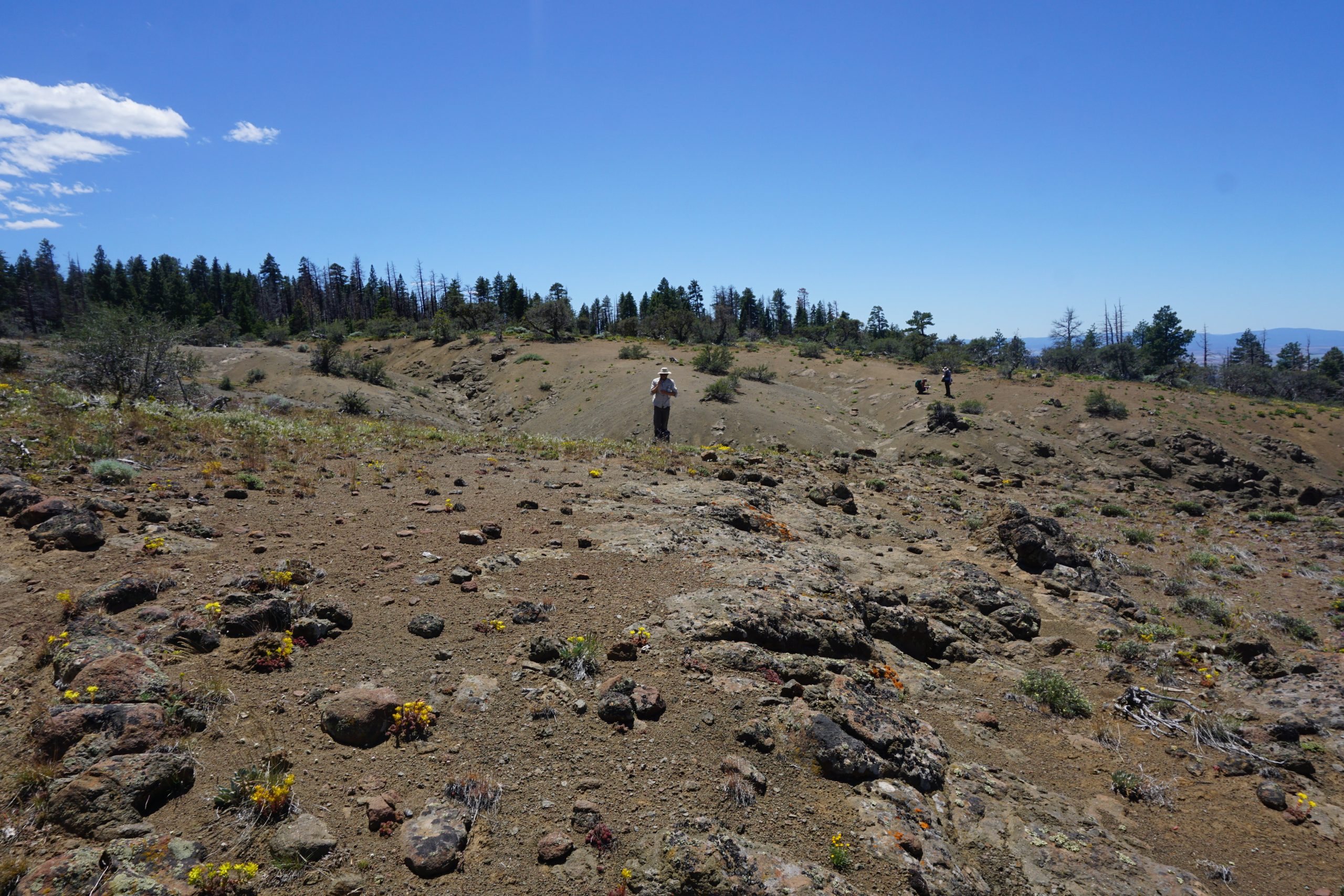
Once the letter was finished and submitted, we then needed to wait for the Regional Forester to be briefed on the agreement and sign. No one knew exactly when that would be, but in the meantime, field season had begun!
Field preparations went on as usual. CaPR members were excited by the prospect of finally making a group expedition to the far corner of the state to make collections from the extremely underrepresented area of the Modoc National Forest and Applegate Field Office-managed Bureau of Land Management (BLM) land. We developed a plan with the Modoc National Forest botanist Genevieve Harman to collect vouchers under the CNPS voucher LOA during scouting in June and wait to collect seed until if/when the CaPR LOA went through. It resulted in an odd trip where we were hoping that nothing on USFS land was ready to collect so we could avoid the sad experience of passing up perfectly good seed from rare plants.
Fortunately, the trip was well timed to catching plants in bloom rather than seed at many of our spots on the Modoc National Forest, though seed was ready to collect on the lower, drier BLM lands. But on the last day, a group had ventured to the north end of the forest to scout a promising spot with population records of at least five rare plant species nearby – and a couple of the species proved to be with ripe seed. Yet, because they had to drive so far, the group drove through the town of Alturas and had sufficient cellular signal to check email – and learn about the signing of the LOA! So, seed was collected, and the group joined the rest of the CaPR expedition group in triumph and full of happy news.
Modoc wasn’t the only National Forest CaPR members used the LOA to collect rare plant seeds from, and the reports are now rolling in detailing what the different teams were able to accomplish. We believe we are making good on the promise of the letter “to conserve USFS seed for the rarest flowering plants in California and will increase the Best Available Scientific Information about rare plants across the Region to aid management.”
National Collection Spotlight: Violet Milkvetch
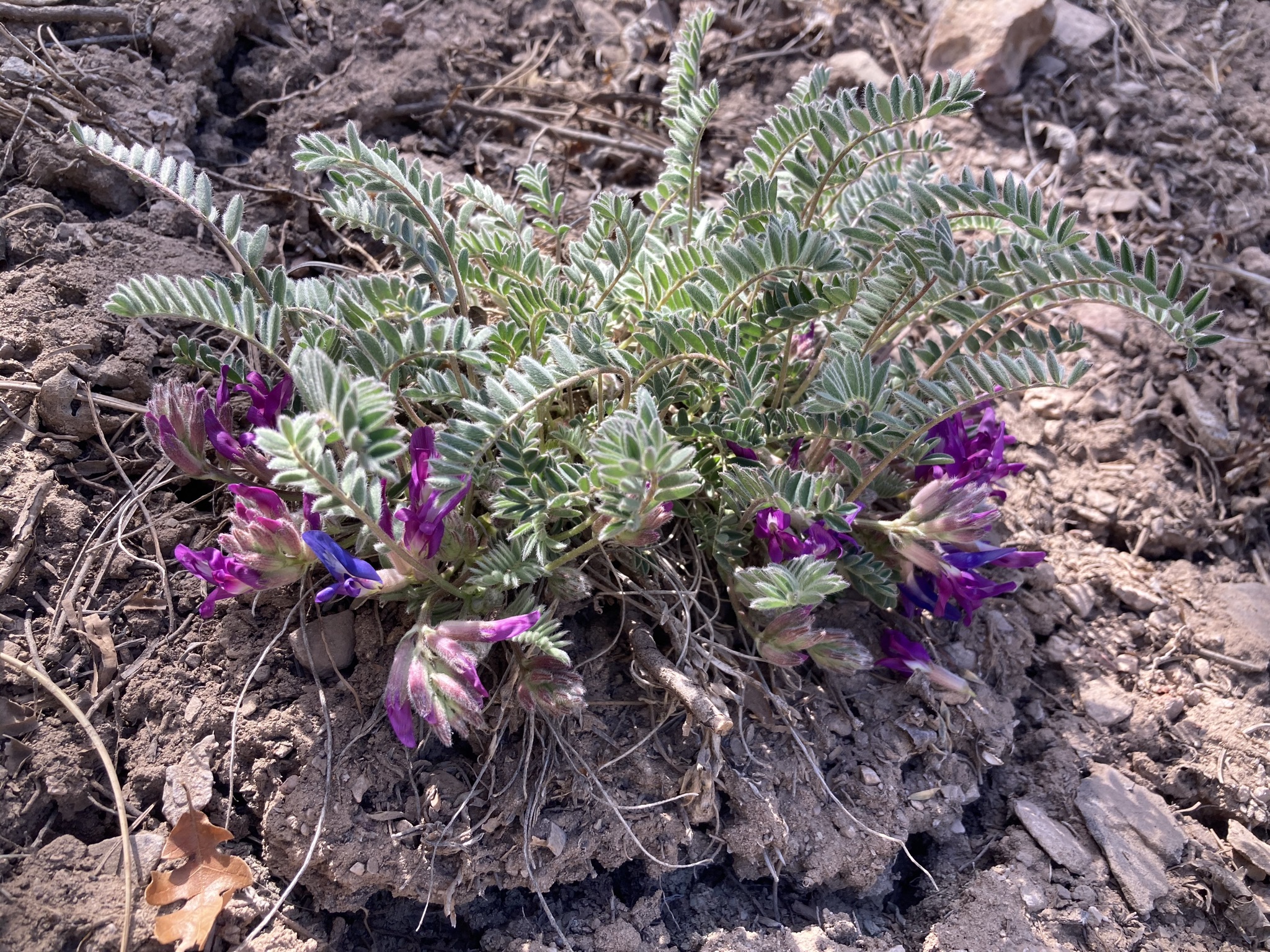
Violet Milkvetch (Astragalus iodopetalus) is a vulnerable species native to Colorado and New Mexico. This species lives in forests and shrublands, occurring in several National Forests, though most known occurrences of this species are considered historical. In 2021, several scouting trips and subsequent collections expeditions conducted by the Institute for Applied Ecology (IAE) in New Mexico found two populations in the state, both of which appeared to be increasing in size at the time. Historic data for occurrences of this species allowed IAE to locate these two populations which had been previously documented in the Santa Fe National Forest.
Violet Milkvetch is held in the CPC National Collection at the Institute for Applied Ecology and the USDA-ARS National Laboratory for Genetic Resources Preservation. IAE collected this species in 2021 as part of the CPC and U.S. Forest Service Rare Plant Seed Banking Agreement.
Learn more about conservation actions taken for Violet Milkvetch on its National Collection Plant Profile, and help support critical conservation work for this species with a Plant Sponsorship.
As Seen on CPC’s Rare Plant Academy: Prioritizing species, populations, and regions for ex situ collecting: Threatened native U.S. oaks as a case study
Despite being essential components of many North American ecosystems, many native oaks in the U.S. are threatened with extinction in the wild. How should these trees be prioritized in ex situ conservation efforts? In this Rare Plant Academy video, a presentation from CPC’s 2019 National Meeting, Emily Beckman of The Morton Arboretum describes a conservation gap analysis of North American native oaks conducted by researchers at The Morton Arboretum, BGCI-US, and the U.S. Forest Service. This gap analysis included a survey of global ex situ efforts, allowing researchers to estimate the genetic and ecological coverage of ex situ collections for the oaks. The results from this analysis can be applied to the prioritization of species, populations, and regions when it comes to the ex situ conservation of threatened native U.S. oaks.
Register for the 2023 National Meeting
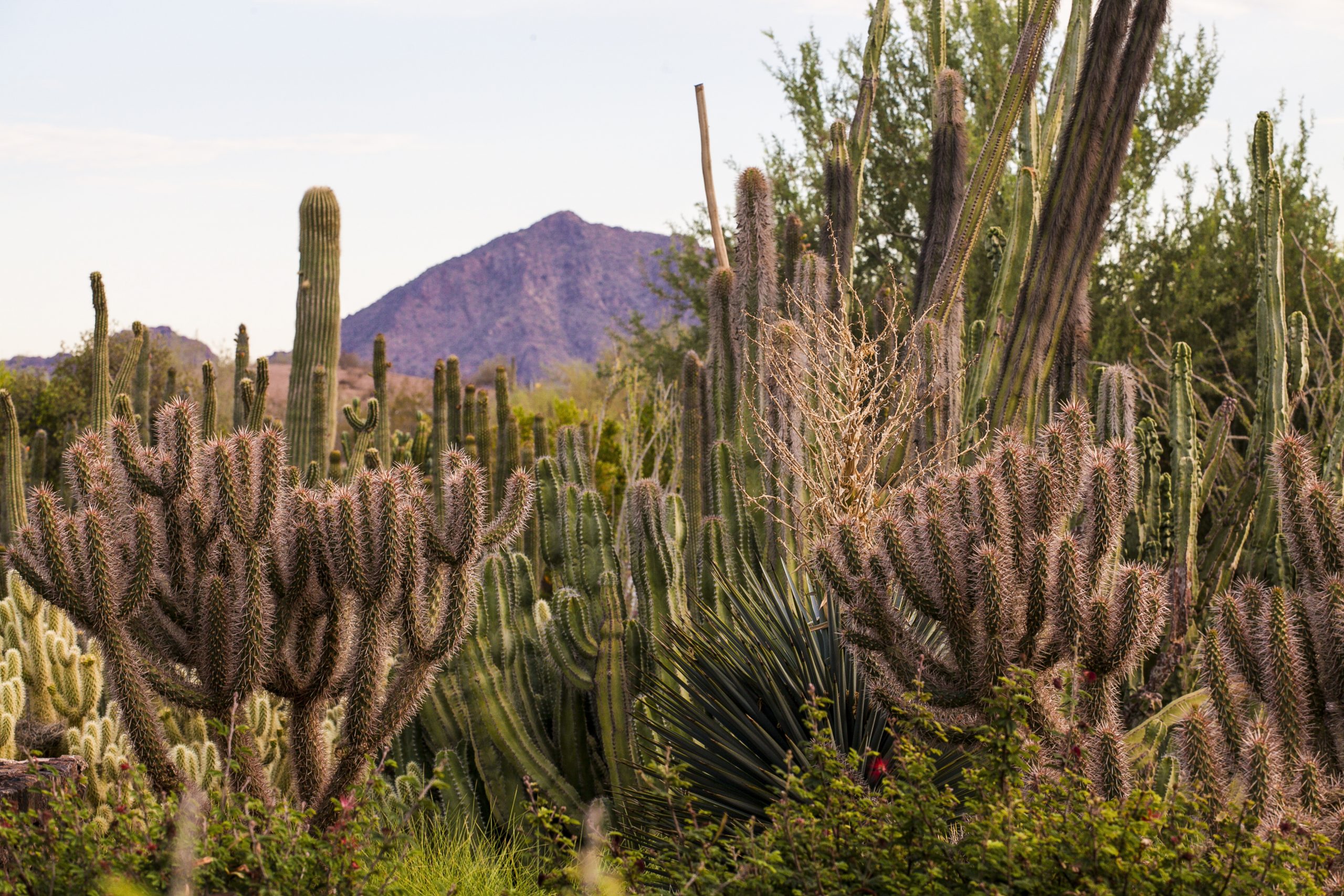
Registration is now live for the 2023 CPC National Meeting taking place May 4-6! Back by popular demand, this year’s meeting will feature a hybrid format, with both in-person and online presentation sessions highlighting the theme of “On the Horizon: Looking to the Future of Plant Conservation.” In-person sessions will be held at Desert Botanical Garden which offers 55 acres of gardens and trails for you to explore and immerse yourself in the beauty of the desert. In-person sessions will be live streamed and recorded for later viewing on the conference platform. Virtual attendees will also have access to pre-recorded presentation content and virtual breakout sessions.
Presentation sessions will include updates from the CPC National Office on network-wide initiatives, plus lightning talks from CPC network partners on plant conservation research, accomplishments and challenges, and future initiatives. We welcome both Institutional and Individual Conservation Partners to submit abstracts for presentation sessions highlighting this year’s theme of “On the Horizon: Looking to the Future of Plant Conservation.” We encourage our contributors to consider presentation proposals that spotlight new conservation projects and research; ways your institution is visioning the field of plant conservation, goals, and outcomes in the future; or topics that otherwise adhere to the theme.
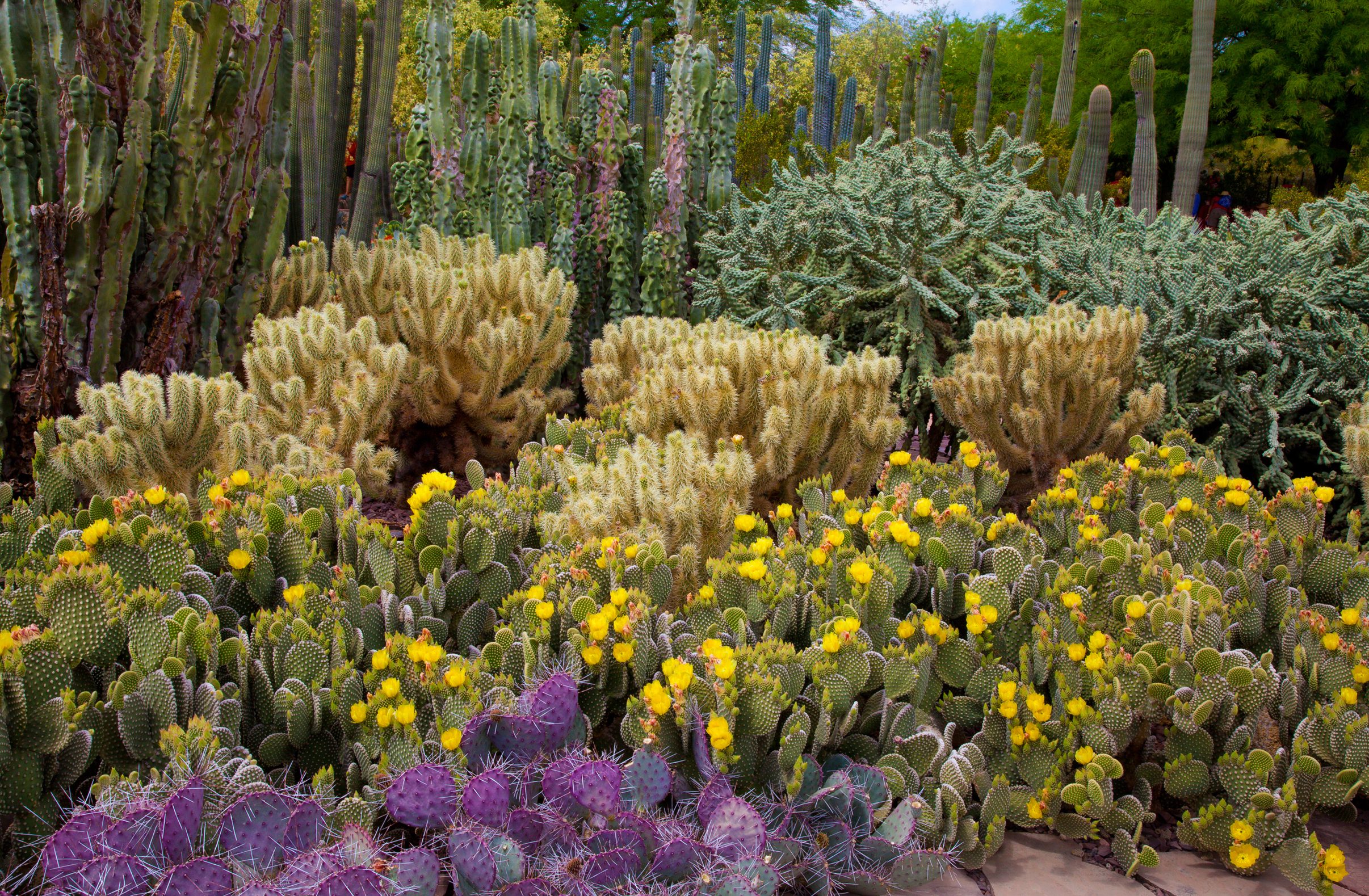
In-person attendees also have the opportunity to journey with CPC and Desert Botanical Garden (DBG) to the Verde Valley during our post-meeting field trip on Saturday, May 6. Participants will visit three sites that are home to two of the four known pre-contact domesticated agaves grown by the Sinagua peoples: Sacred Mountain (Agave verdensis Hodgson & Salywon) and Page Springs agave (Agave yavapaiensis Hodgson & Salywon).
Friends of CPC are also invited to submit their botanical artworks for our inaugural CPC Botanical Art Contest! These fine artworks of rare and native plants will be exhibited at the 2023 National Meeting at Desert Botanical Garden for attendees to peruse, and a panel of jurors will select first, second, and third place winners for cash prizes. Learn more.
Early bird registration ends March 15! Learn more and register today.
Get Updates
Get the latest news and conservation highlights from the CPC network by signing up for our newsletters.
Sign Up Today!Ways to Help CPC

Donate to Save Rare Plants
Without plants, life as we know it would not be possible. Yet two in five of the world’s plants are at risk of extinction. More than ever before, rare plants need our help!
That is why all of us at the Center for Plant Conservation (CPC) are deeply grateful to have you as part of our conservation community. Your generous and unyielding support allows CPC and our network of world-class botanical institutions to make great strides in our shared mission to Save Plants from extinction.
Your gift ensures CPC’s meaningful conservation work will continue. Together, we save more plants than would ever be possible alone—ensuring that both plants and people thrive for generations to come. We are very thankful to for all that you do to help us Save Plants!
Donate to Save Plants Today!

Conservation Advocacy Initiatives
- Recovering America’s Wildlife Act (RAWA); S. 2372
- North American Grasslands Conservation Act of 2022; S.4639
- Botanical Sciences and Native Plant Materials Research, Restoration, and Promotion Act; H.R.1572
- Native Plant Species Pilot Program Act of 2021; H.R. 1548
Donate to CPC
Thank you for helping us save plant species facing extinction by making your gift to CPC through our secure donation portal!
Donate Today

